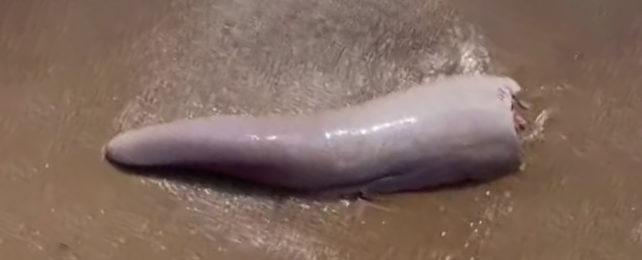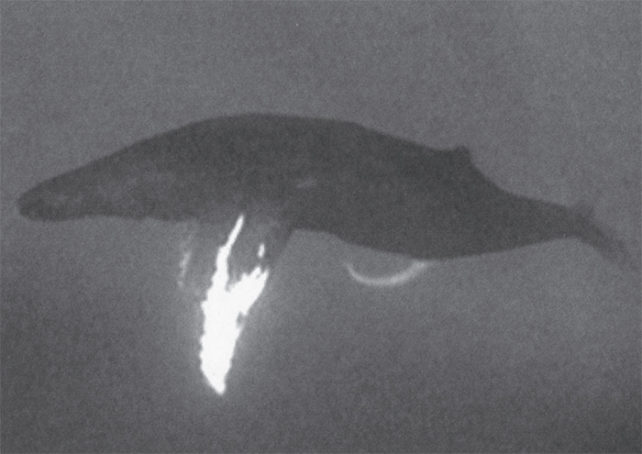Bizarre Discovery on Australian Beach Could Be a Ginormous Whale Penis
 The mystery chunk of animal flesh that washed up on the beach. (@bootscootinaf/TikTok)
The mystery chunk of animal flesh that washed up on the beach. (@bootscootinaf/TikTok)A huge, smooth, pink, severed flesh-tentacle-thing discovered on a quiet island beach in Australia has drawn speculation over what kind of animal is now missing a piece of its anatomy.
The "giant random animal part" was found and filmed by TikTok user Afri Gregory, and has since gone viral with millions of views sparking tons of speculation about whale penises.
"It is massive, look! That's my foot. It's like the size of my leg. Eeew. Disgusting!" Gregory exclaimed in the footage, taken on an island off the coast near Townsville in Queensland.
Macquarie University zoologist Vanessa Pirotta cautions that we don't actually know what the meter and a half of dismembered flesh is.
"It could be anything, from [a] juicy component of a random marine animal, [such as a] shark liver," she told Newsweek. But she does admit that it's shape, size and overall similarities do look comparable to a whale's wang.
Although cetacean skeletons have long since adapted to a life of floating through the ocean, sexual selection has held on to their pelvic bones to give their robust penis muscles something to anchor onto. This gives the marine mammals greater mastery of their penis's flailing, which in turn suggests there's some kind of reproductive advantage to having a greater degree of control.
That dexterous movement has been proposed as an explanation for at least one legendary sea serpents sighting. The crew of the 19th century sailing ship Pauline witnessed what they thought was a sea serpent attack a group of whales in 1875.
While hazy glimpses of whale penises might make for a good hypothesis, there's no reason to think all – or even any – serpent sightings are the result of whale flashings.
Nonetheless, few of us are accustomed to seeing such sights strolling along tropical beaches, so can be excused for stopping and staring.
Being the largest animal known to have existed, blue whales (Balaenoptera musculus) naturally also have the most giant of penises in the animal kingdom – averaging about 2.5 to 3 meters (8 to 9.8 feet) long. But the more likely contender, if a penis is indeed what we're looking at on that beach, is a humpback whale (Megaptera novaeangliae), as they're currently in the Queensland waters to breed.
Humpback whale mating organs have long been studied by researchers to learn more about the mating habits of the large cetaceans. In 1955, examining whale testicles allowed researchers to conclude that they're seasonal breeders, and the length of a whale's penis can be used as an indicator of how sexually mature the animal is.

In 2002, researchers filmed 121 hours of 630 different humpback whale pods, capturing 13 instances of whale erections. From this they concluded most penis extrusions occurred during male contests for dominance. But humpback's are baleen whales – they don't have teeth – so a rival or spurned lover could not have done such damage to a whale's erection.
This study also found lone males can extend themselves while singing for company. So, perhaps the recent discovery on the Australian beach originated from one such lonely male, who had the misfortune of doing his sexy song fatally close to a predator such as an orca.
Unless an expert goes out to examine the remains in person, however, it will remain a mystery how this giant chunk of severed ocean flesh came to be in its current resting place, or to what it actually belongs to.
"If anything, it provides an opportunity for people to learn more about whale reproduction or other juicy components of animals that might wash ashore," Pirotta told the Australian Broadcasting Corporation.
"I can see why people are interested right around the world, but we just don't know" what the fleshy member even is, Pirotta said.
